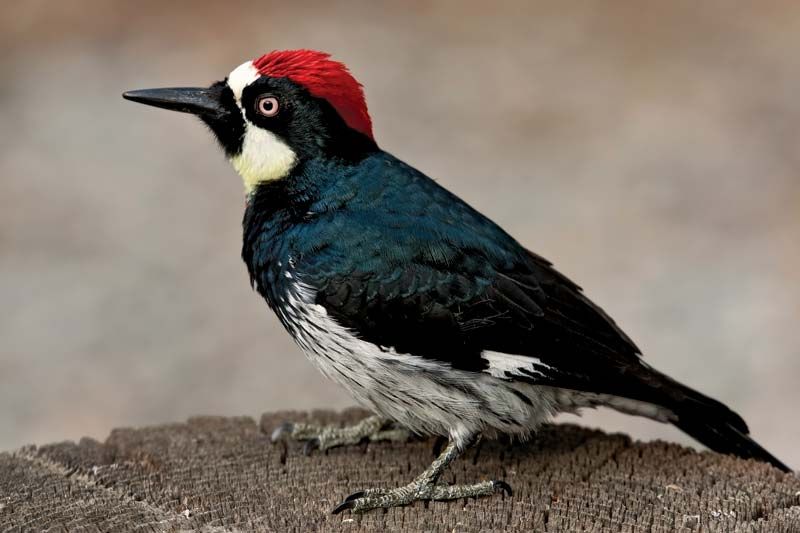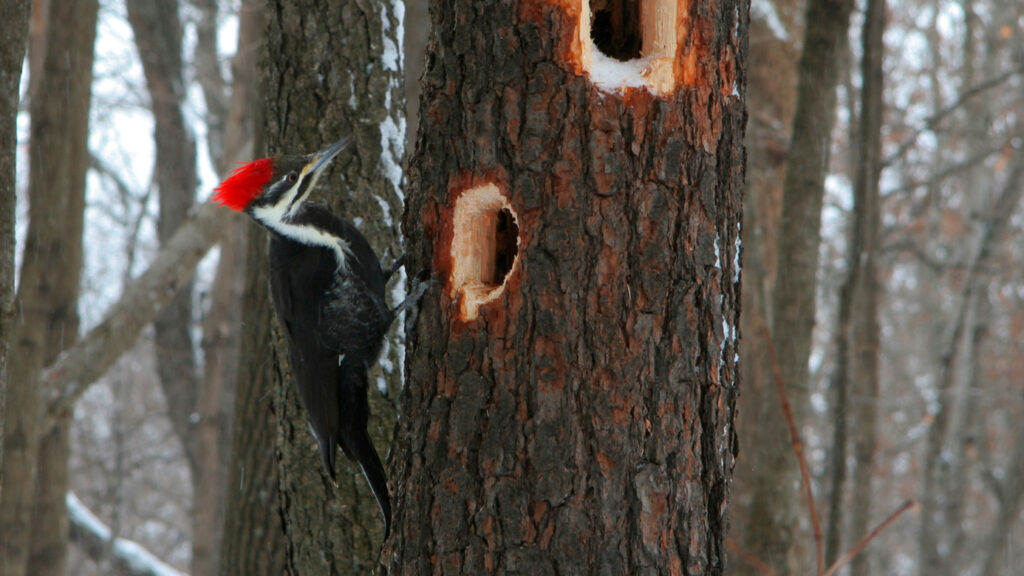
Woodpeckers are fascinating and distinct birds noted for their rhythmic drumming and peculiar behavior. These avian acrobats contribute significantly to the ecology by altering their habitats and acting as indicators of forest health. We will delve into the world of woodpeckers in this 1500-word piece, studying their physical qualities, habitat, behavior, and the critical function they play in the natural world.
An Overview of Woodpeckers

Woodpeckers are a large family of birds in the Picidae family. These birds are distinguished by their chisel-like beak, powerful necks, and zygodactyl feet, which have two front and two backward toes. These adaptations enable them to thrive in their respective niches.
- Plumage
Woodpeckers have a variety of plumage patterns, including black, white, and red markings. In their favored woodland settings, these patterns provide great camouflage.
- Tongue and Beak
The woodpecker’s beak is specialized for piercing into wood in order to discover and retrieve insects. Their long, elongated, barbed tongues aid in the capturing of prey from deep crevices.
- Dimensions and Form
Woodpeckers range in size from as little as sparrows to as large as crows. Their body form is compact and strong, making them perfect for clinging to tree trunks and branches.
Distribution and Habitat

Woodpeckers can be found in a wide range of habitats, from temperate woods to deserts. They live in North and South America, as well as Asia, Europe, and Africa. These birds are frequently associated with forested settings, where they can scavenge for insects and build nests in tree cavities.
Foraging Habits
Woodpeckers are largely insectivorous, and their foraging activity is both distinctive and necessary. They utilize their powerful bills to drill through tree bark in order to locate insects buried beneath the surface. Their drilling produces distinct sounds, giving woodpeckers their name.
Nesting and breeding


- Construction of a Nest – Woodpeckers are well-known for their excellent nesting abilities. They create nests by excavating cavities in trees. These cavities are meticulously crafted and can take several weeks to finish.
- Parenting – Parents of woodpeckers share the duties of incubating eggs and feeding their offspring. The nesting cavities provide the developing young with a safe and sheltered environment.
Woodpeckers as Ecological Indicators
Woodpeckers are designated forest health indicator species. The presence of woodpeckers in an area indicates the presence of suitable habitat, which is critical for a variety of forest-dwelling species. Woodpecker conservation initiatives frequently result in the preservation of entire ecosystems.
Interaction between Woodpeckers and Humans
- Conflicts with People
Woodpeckers are occasionally spotted drilling on buildings, inflicting structural damage. This behavior is frequently the result of territorial disputes or the pursuit of insects. Understanding woodpecker behavior can aid in the prevention of such clashes.
- Ecotourism and birdwatching
Woodpeckers are a popular topic among birdwatchers and nature enthusiasts. Their striking look and banging sounds make them an intriguing sight in nature. Ecotourism centered on woodpecker observation benefits both local businesses and the preservation of natural environments.
Conservation Initiatives
- Conservation of Natural Resources
Woodpecker habitat conservation is crucial for their survival as well as the quality of the ecosystems in which they live. These birds can thrive if old-growth forests are protected and suitable nesting grounds are created.
- CReforestation
Restoration and reforestation efforts can offer critical habitat for woodpeckers, ensuring their populations remain stable.












